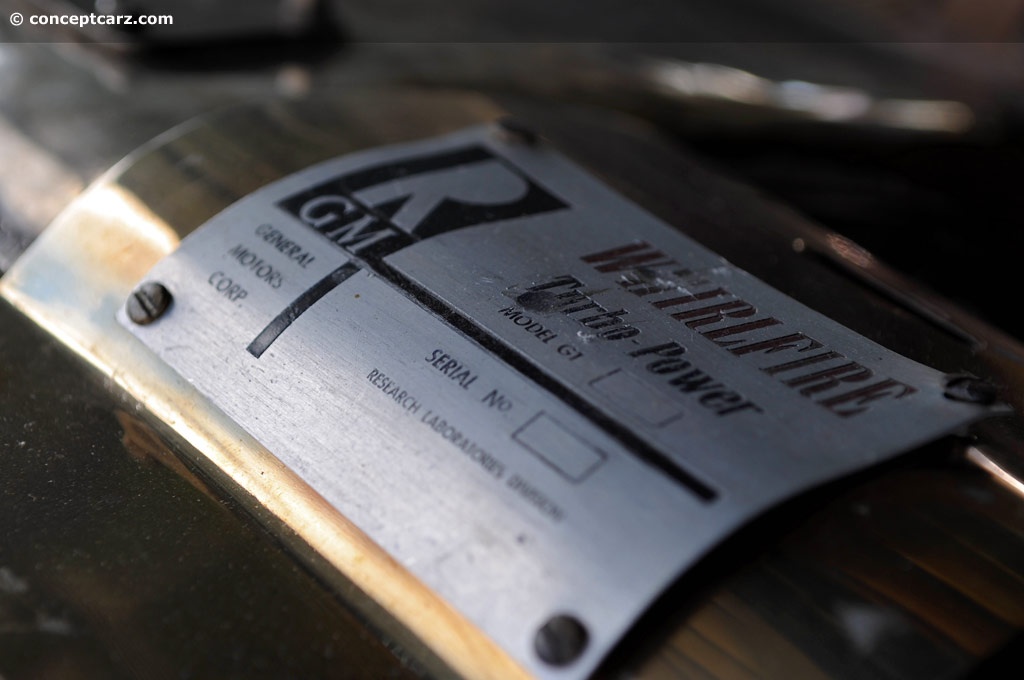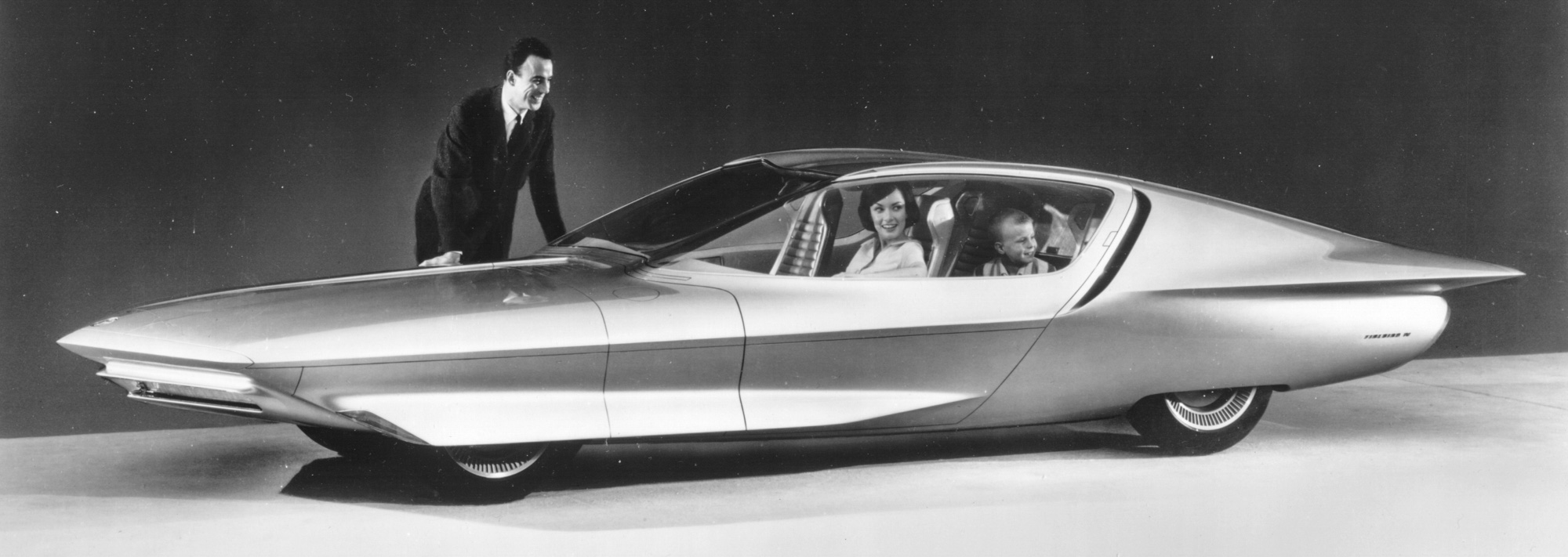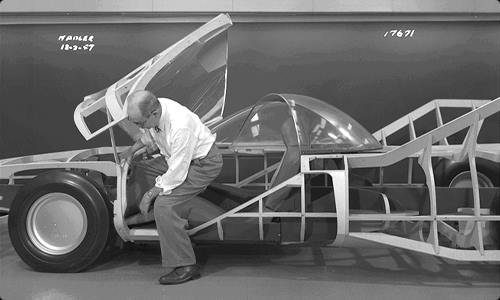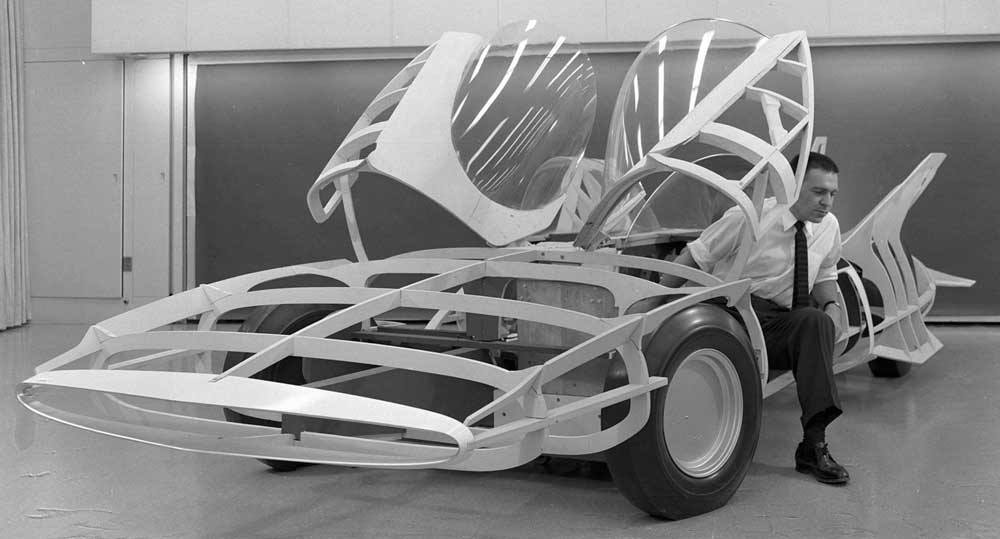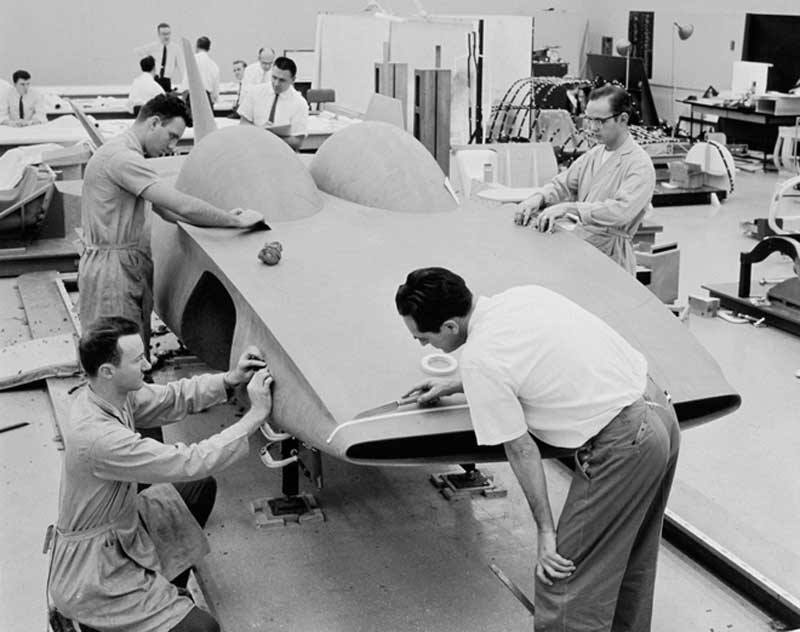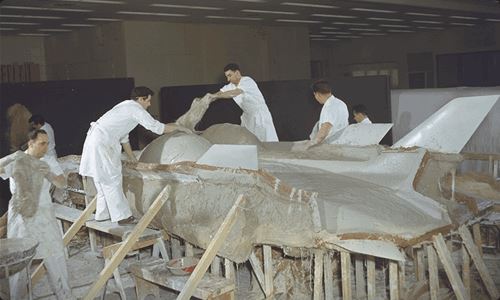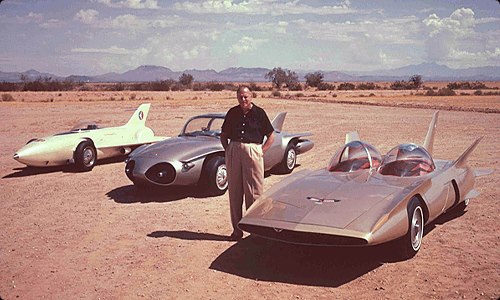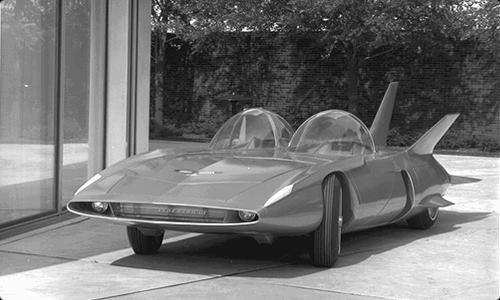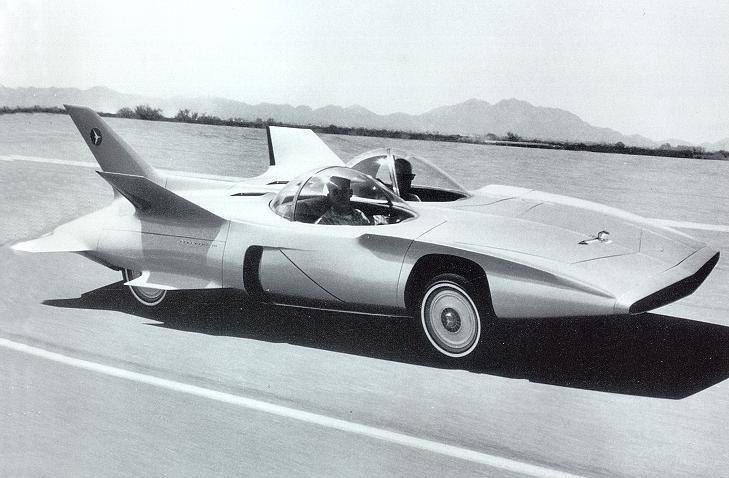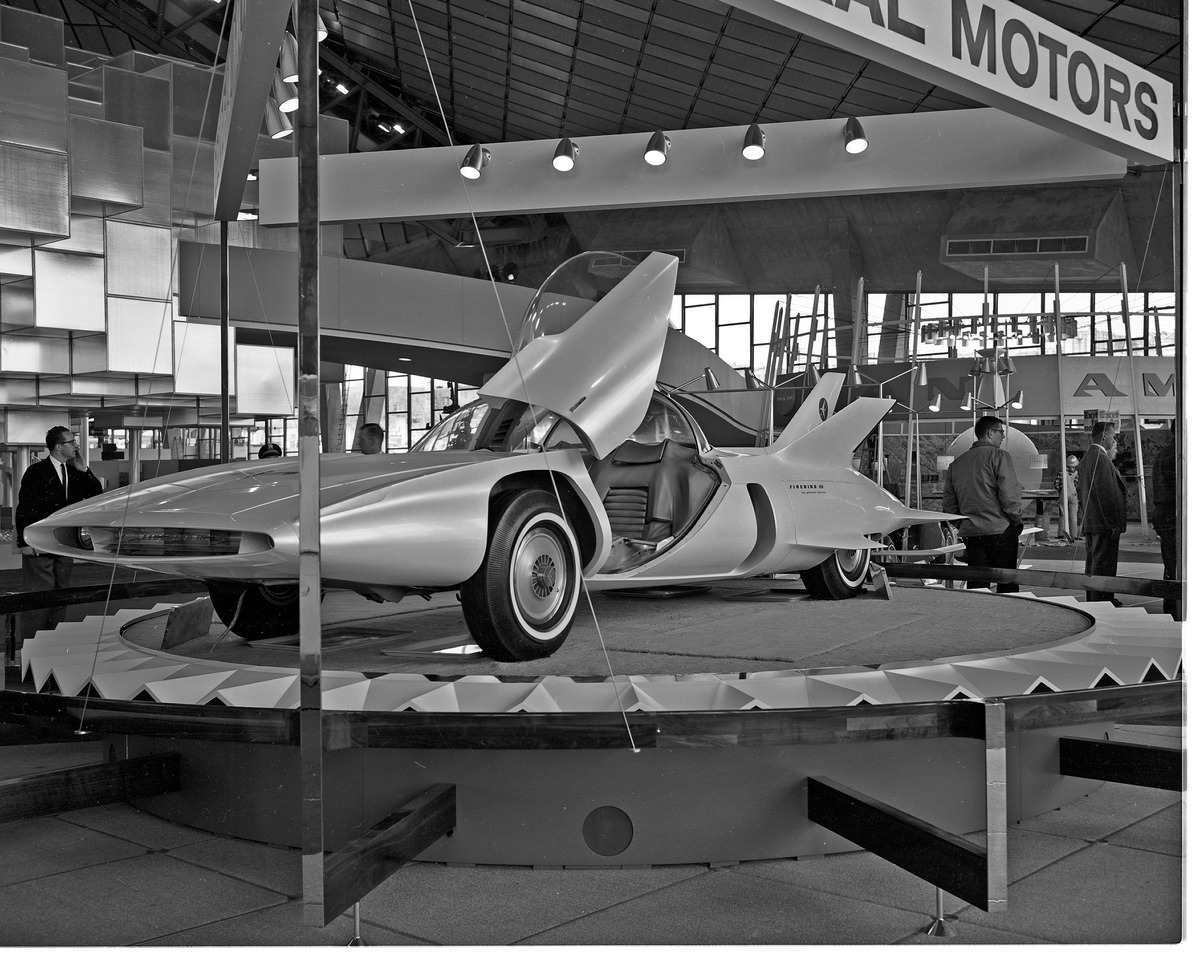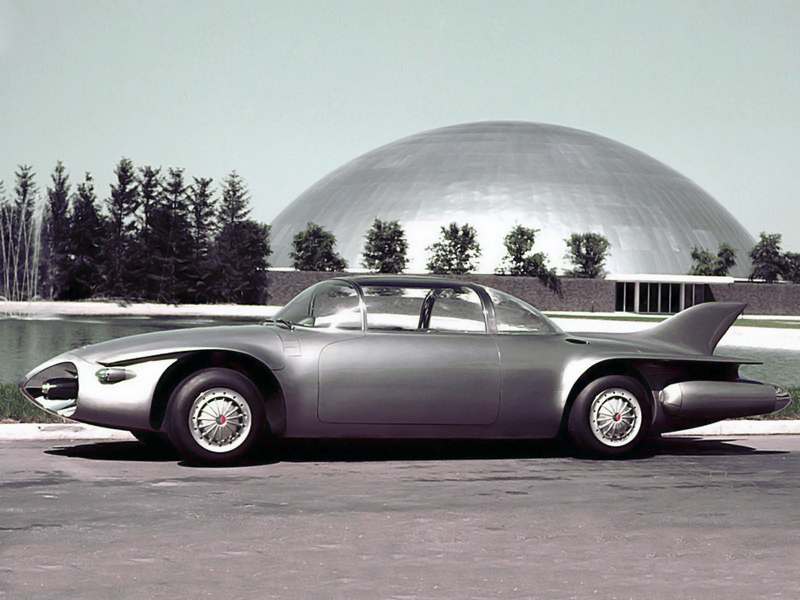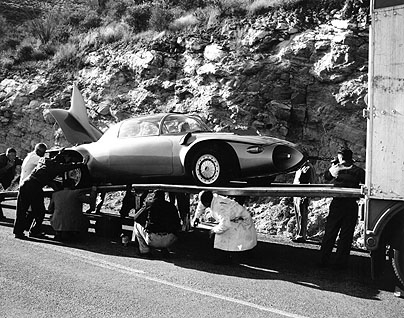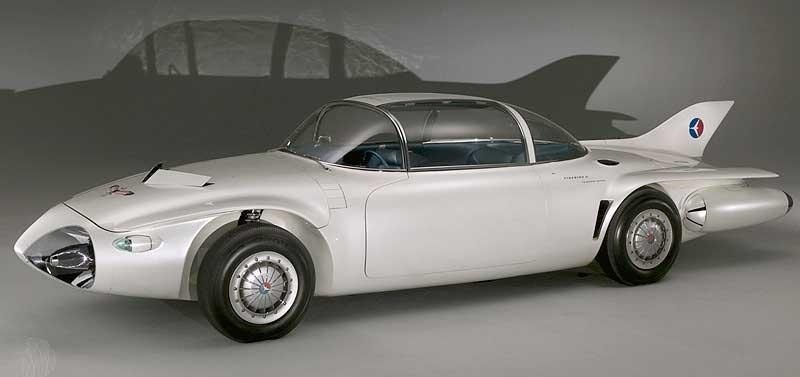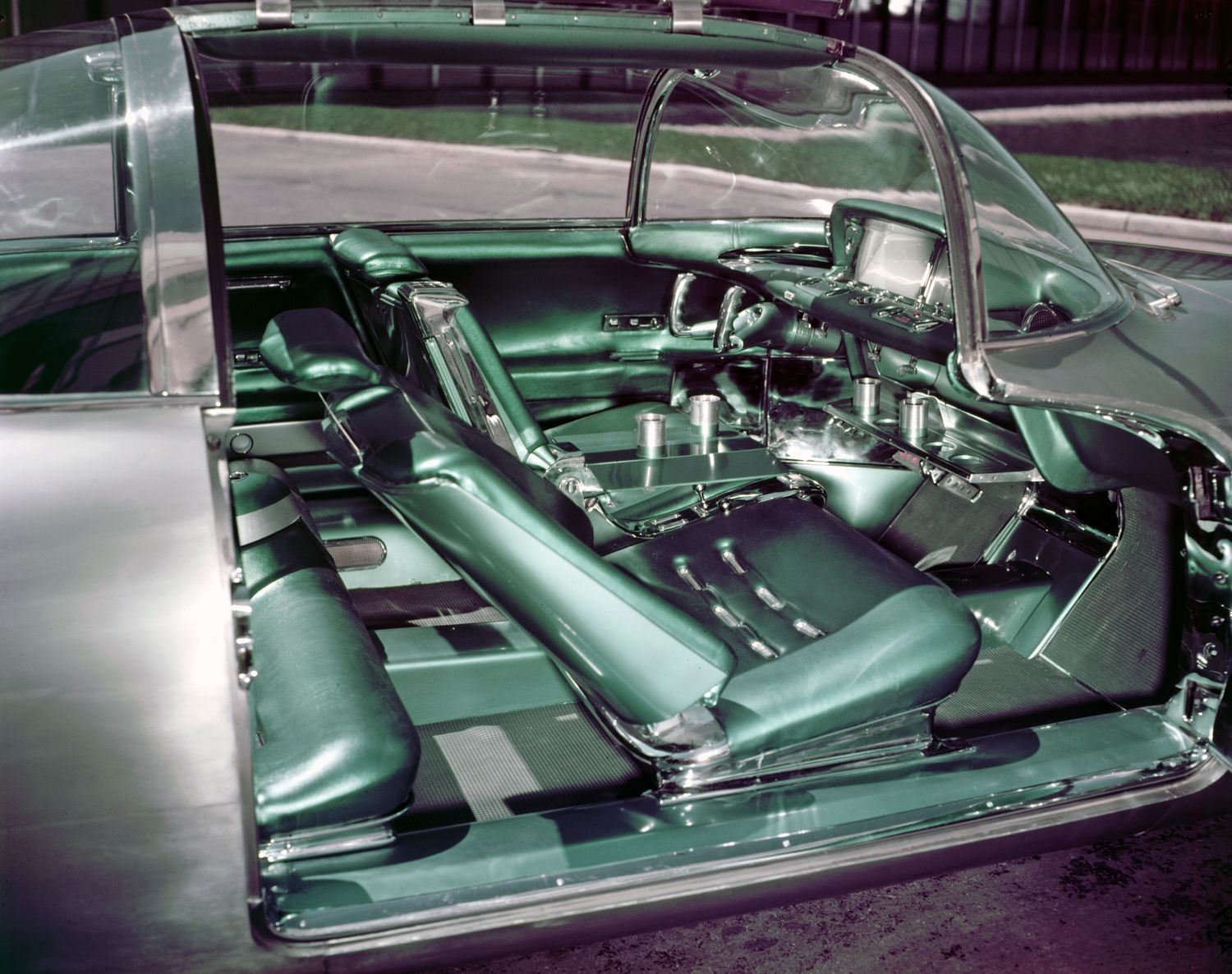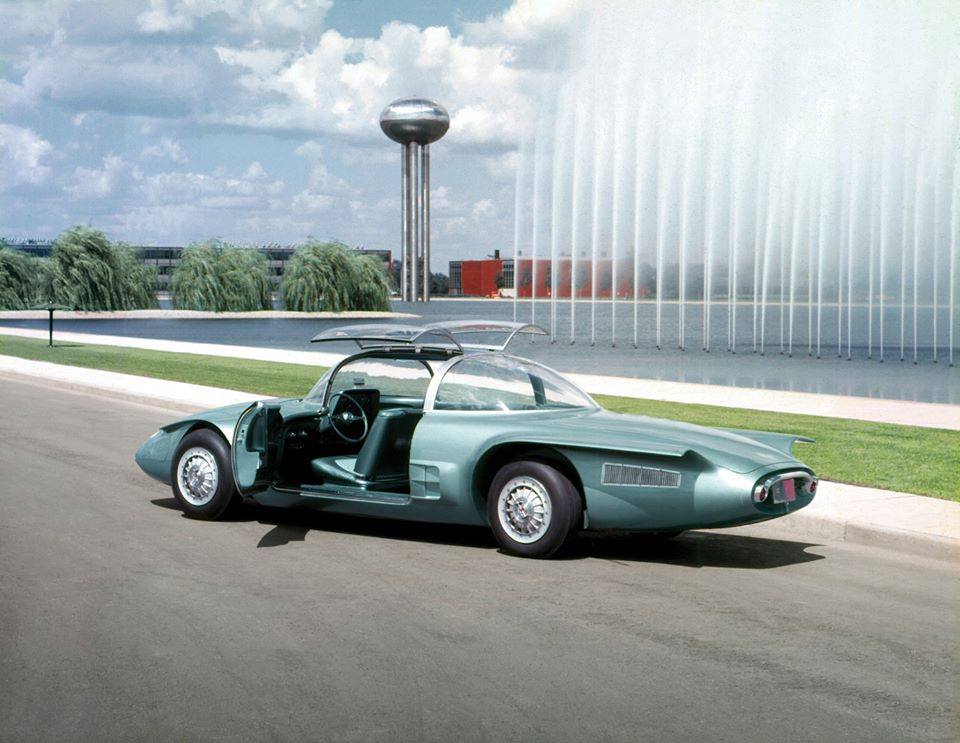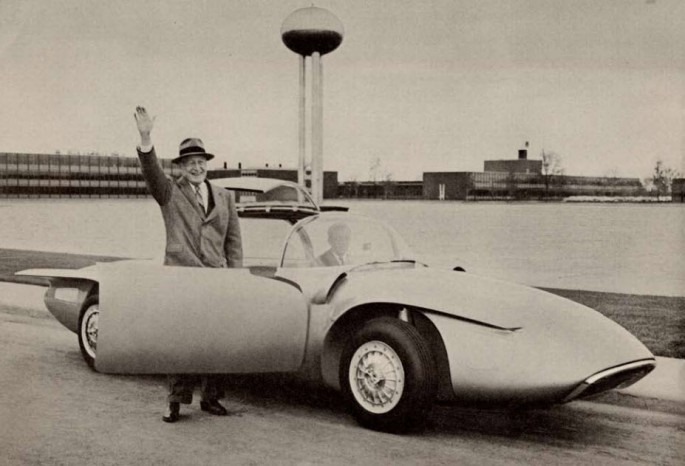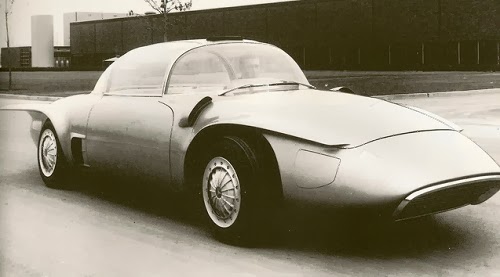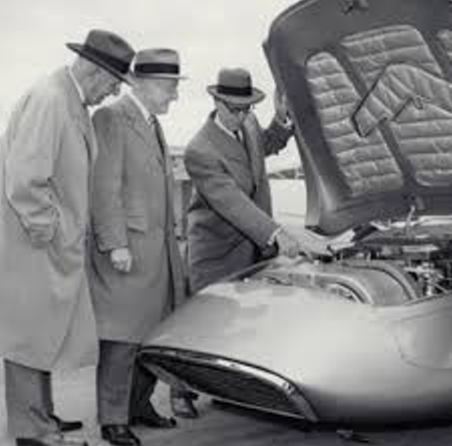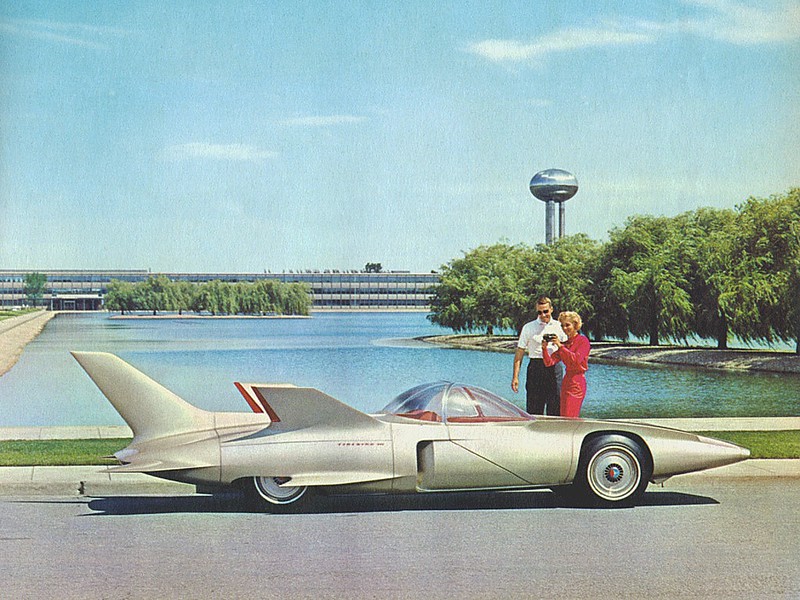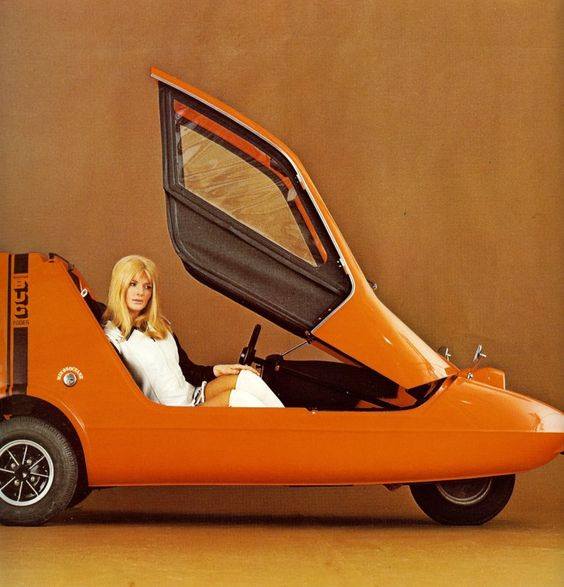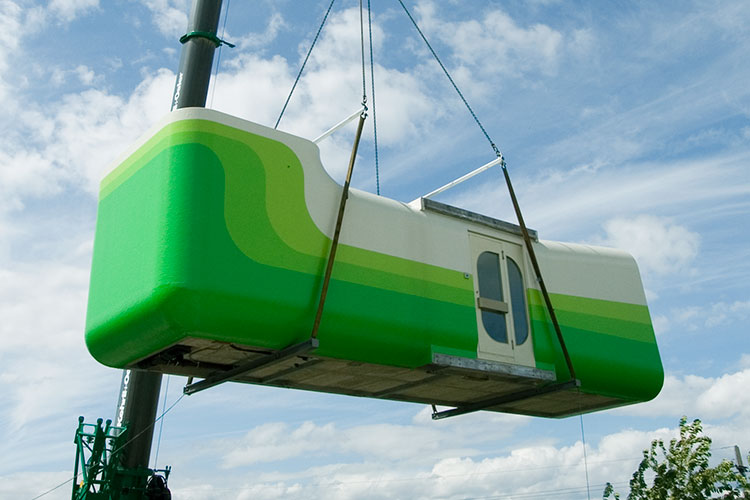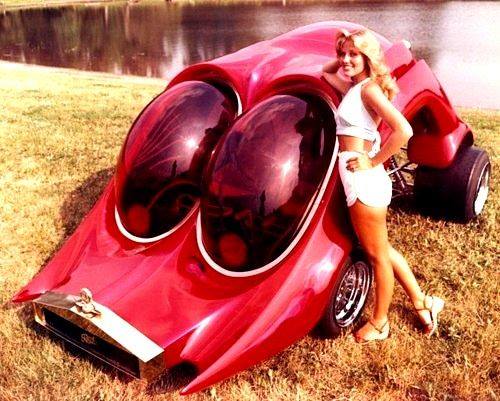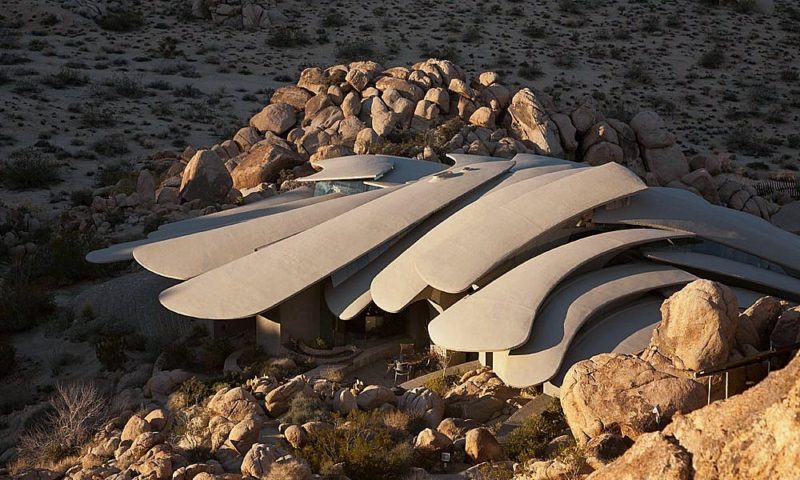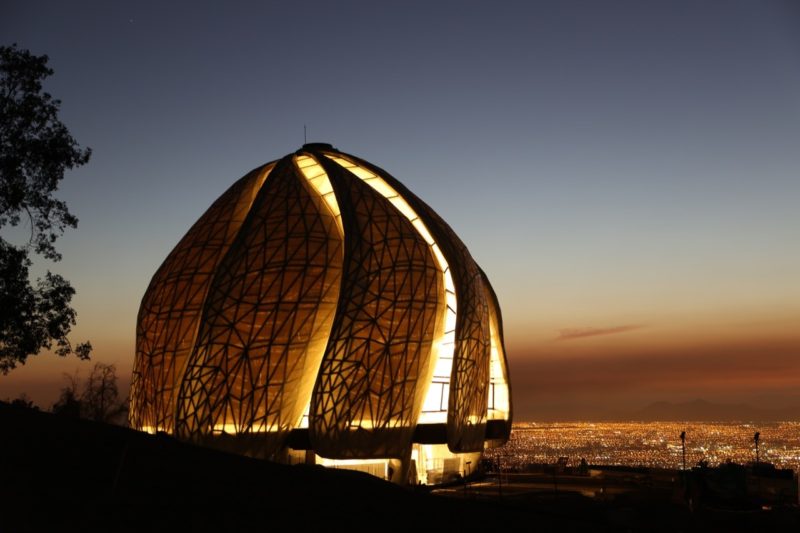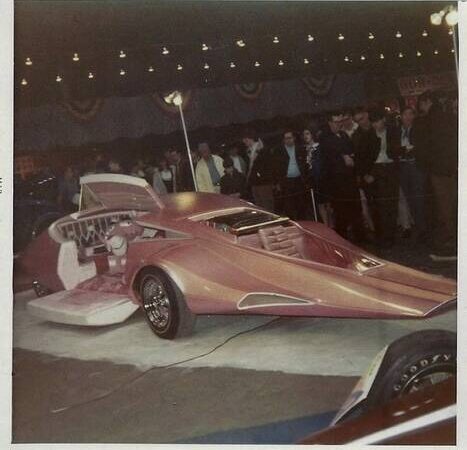Harley Earl GM – Firebird I – II – III – IV
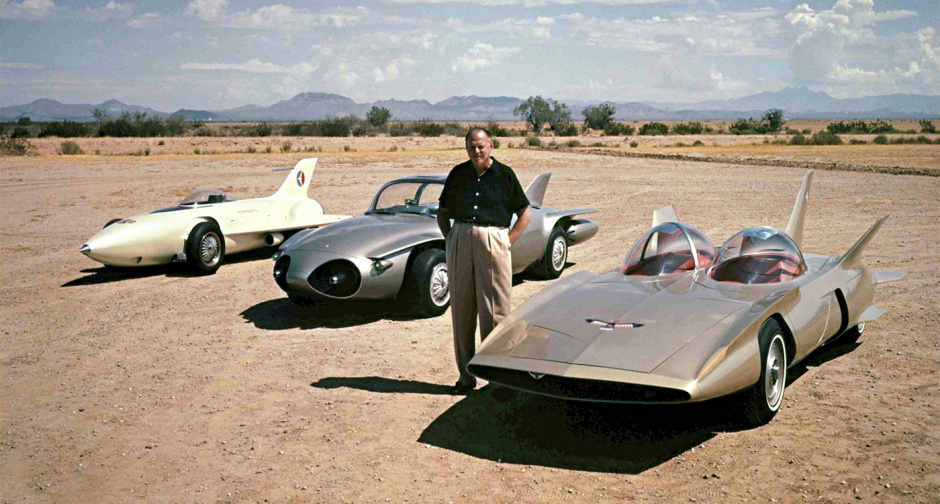
Firebird I – II – III – IV (1956-1959) Prototypes
General Motors
The top speed of the four concept cars is
200 MPH = 321,869 km / h
General Motors Firebird includes a quartet of prototype cars that General Motors designed for 1953, 1956 and 1959 Motorama.
The car designer, Harley Earl , was inspired by the innovations in the design of fighter aircraft at the time. General Motors cars never intended for production, but rather to highlight the extremes of technology and design that the company was able to achieve. The cars have recently joined the exhibition at the Henry Ford Museum in Dearborn, Michigan , and still make regular appearances. The tradition of giving prototypes of vehicles continued with the Pontiac Banshee series . Pontiac division of General Motors also used the name “Firebird” to the line of pony cars , which has no direct relationship with the concept cars.
General Motors (GM) had researched the feasibility of gas turbine engines in cars as early as 1930. It was only early 1950 the company has started to build a current engine, Emmett Conklin who led the project.
Firebird I
In 1953, The research team had produced Firebird XP-21,
later called Firebird I, which was essentially a jet plane on wheels. It was the first gas turbine car tested in the US.
The design with a domed roof on a single seat cockpit, a ball-shaped body entirely in fiberglass , short wings and vertical tail fin. It has a gas turbine engine Turbo Turbo Whirlfire 370 ch (280 kW), which has two speeds, and expels the exhaust to about 677 ° C (1.250 ° F). The total weight of the car is 2.500 lb (1.134 kg), with a wheelbase of 100 inch.
In the beginning, Conklin was the only person qualified to drive the car, and he tested up 100 km / h (160 km / h), but during the shift, the tires lost traction under extreme torque and it immediately slowed for fear of collapse. The race car driver, Mauri Rose, tested later drove the car at the Indianapolis Speedway . GM never really intended to test the potential of power or speed of the gas turbine, but simply the practical feasibility of its use.
The braking system differs from the standard drum systems, in that the drums are outside wheels to facilitate rapid cooling and wings actually have aircraft type flaps to slow high-speed.
The second concept car, Firebird II 1956, was a more practical design: a family four-seat car. It is a low and wide design with two large air intakes at the front, a high-high canopy and a vertical tail fin. Its outer body is made entirely of titanium (which proved difficult to achieve).
The engine power is 200 ch (150 kW). To solve its exhaust heat problem, car feeds the exhaust through a regeneration system, allowing the entire engine to operate at a cooler near 1000 ° F (538 ° C), and manages Accessories.
Kerosene was the most common fuel utilisé.Une another innovation on the car is the first use of disc brakes on all four wheels, With fully independent suspension.
It also included a sophisticated guidance system for use with the "highway of the future", where an integrated electric wire in the floor would send signals that help to guide future vehicles and prevent accidents.
Firebird III
Firebird III exposed to’ Exposition Century 21 , Seattle , 1962.
GM built the third design, Firebird III, in 1958 and debuted in Motorama 1959.
This is another concept extravagant with a fiberglass body and no less than seven short wings and tail fins
(that have been thoroughly tested in a wind tunnel).
This is an engine two-seater powered by a gas turbine engine Whirlfire GT-305 225 ch (168 kW), with a gasoline engine with two cylinders 10 ch (7,5 kW) to operate all accessories. Its exterior design features’ double bubble canopy and technical advances to make it more convenient, as cruise control , antilock brakes and air conditioning .
He also introduced innovations "Space Age", such as special air brake brakes like those found on airplanes, That emerged from flat panels in the car body to slow its high-speed; A key “ultrasonic” who scored the doors to open; An automated guidance system to avoid accidents; And direction "unrestrained". The driver controls the direction with a joystick positioned between the two seats. This gave the car a more futuristic feel and simulated the experience of flying a plane.
Firebird IV
The Firebird IV debuted at the New York World Fair 1964 , in General Motors Futurama exposure. It was another design "future" designed for aviation and turbine craft, GM coded internally as the XP-790.
Its designers have designed for a future in which the cars are run automatically via programmed control systems, for “ensure absolute safety to more than twice the speed possible on the highways of the day”. Although billed as turbine, Firebird IV was not functional. GM repacked Firebird IV for the exposure circuit 1969 as Buick Century Cruiser. Apparently, The show car was crushed in the years 1980.
specifications:
wheelbase: 119 ; total length: 229.8 ; width: 77.6 ; height: 45
The Motorama Theme (1956)
The motorama film 1956 foresaw a future that contrasted with the present (1956).
In this present, a warm nuclear family and occupants convertible sweat trying to get to the beach, but they are stuck, immobile, trapped in an unbearable traffic jam Highway.
In a flash forward, they sail at high speed in an air-conditioned comfort along an automated highway (no other vehicle to see) in their Firebird turbine.
The concept of the film (now more than fifty years)
was that this future was not unreasonably distant.
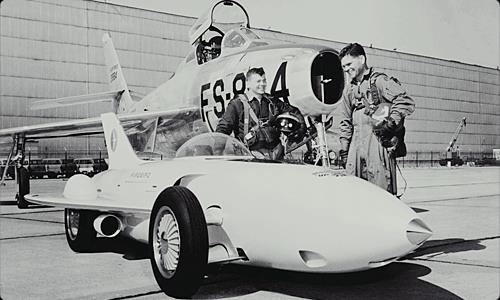 Concept Car 1954 – GM Firebird XP-21
Concept Car 1954 – GM Firebird XP-21
Firebird III on display at the Century 21 Exposition, Seattle, 1962.
 GM Firebird XP-21 Gas Turbine
GM Firebird XP-21 Gas Turbine
promotional film featuring the first of six General Motors Firebird Gas Turbine Concept Cars, designed by Harley J. Earl. Great





GM Firebird I concept car
GM Firebird II concept car

GM Firebird III concept car



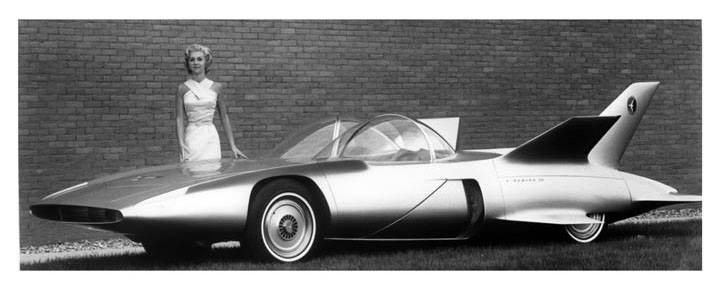

Firebird II
1956 GMC Firebird II – Titanium Concept

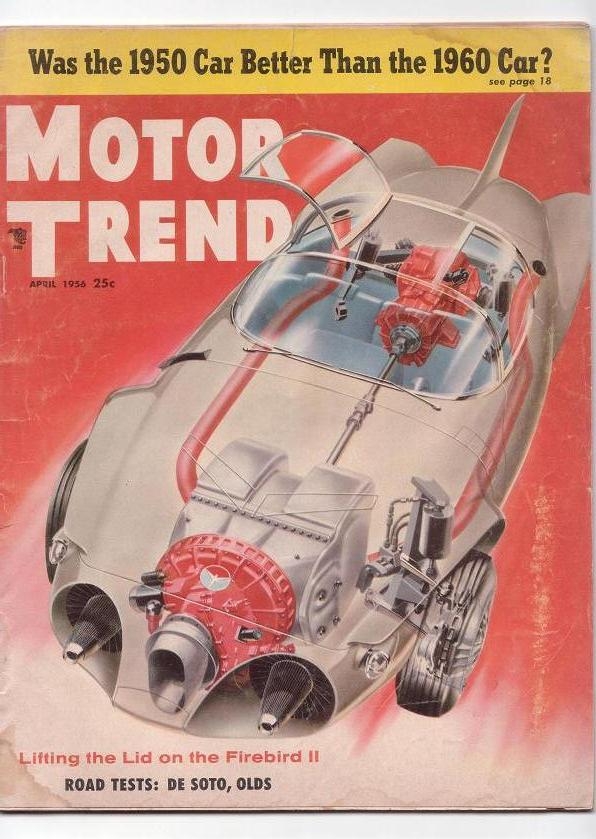 BONUS !
BONUS !
XP–500 CONCEPT 1956
General Motors XP 500 “Firebird” Free Piston Gas Turbine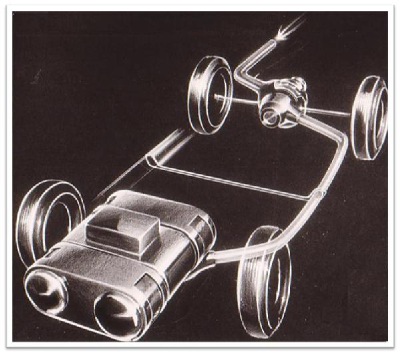 General Motors XP-500 was the world's first free piston car. It was an experimental vehicle built by General Motors Research Laboratories that was completed and announced to the public in 1956 after 14 month of development. As it was completed just before the dedication ceremony of the GM Technical Center, it was presented on the day of the exhibition and on the national television that covered the event. The XP-500 was similar in style to the Gas Turbine Firebird II.
General Motors XP-500 was the world's first free piston car. It was an experimental vehicle built by General Motors Research Laboratories that was completed and announced to the public in 1956 after 14 month of development. As it was completed just before the dedication ceremony of the GM Technical Center, it was presented on the day of the exhibition and on the national television that covered the event. The XP-500 was similar in style to the Gas Turbine Firebird II.





Firebird III debuted at Motorama's 1959. It was an extravagant prototype with a fiberglass exterior, seven short wings and tail fins.
this vehicle, like the two generations of the Volt, allowed drivers to pre-condition the interior temperature before entering the vehicle.
 |
 |
 |
 |


